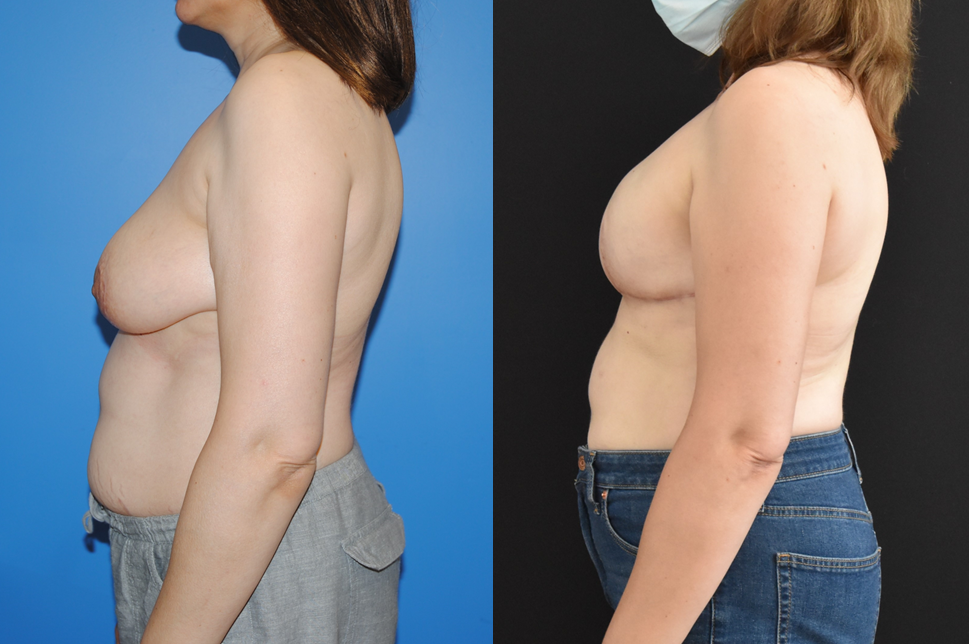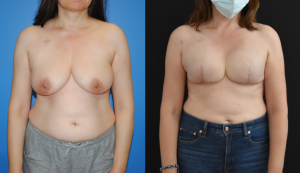Bilateral mastectomy breast reconstruction is common in patients who have BRCA gene positivity. Bilateral mastectomy is also common in patients who choose to undergo mastectomy and contralateral prophylactic mastectomy. When the breast is ptotic, defined by a nipple areola complex that descends below the level of the inframammary fold, the nipple areola complex cannot maintain a blood supply sufficient to maintain viability. In these patients we recommend removing the nipple areola complex. If the nipple areola complexes are in significantly different locations on the chest wall, we recommend removing the nipple areola complex.
The inverted-T mastectomy skin pattern allows the reconstructed breast mound to be in a higher position than pre-operatively. In addition, upper pole fullness of the breast can be more easily achieved. Tissue expanders are often placed at the time of the mastectomy and then exchanged for either saline or silicone gel mammary prosthesis either one year after radiation therapy or between 6 months to one year post mastectomy when the soft tissue of the chest has healed and stabilized.
Patient satisfaction is high with the inverted T-mastectomy skin pattern. It is important for patients to have a diet that is high in protein to facilitate wound healing. The inverted-T incision requires good skin healing in order to prevent wound breakdown. Factors that a patient can control to facilitate wound healing are protein intake and body mass index. If th




